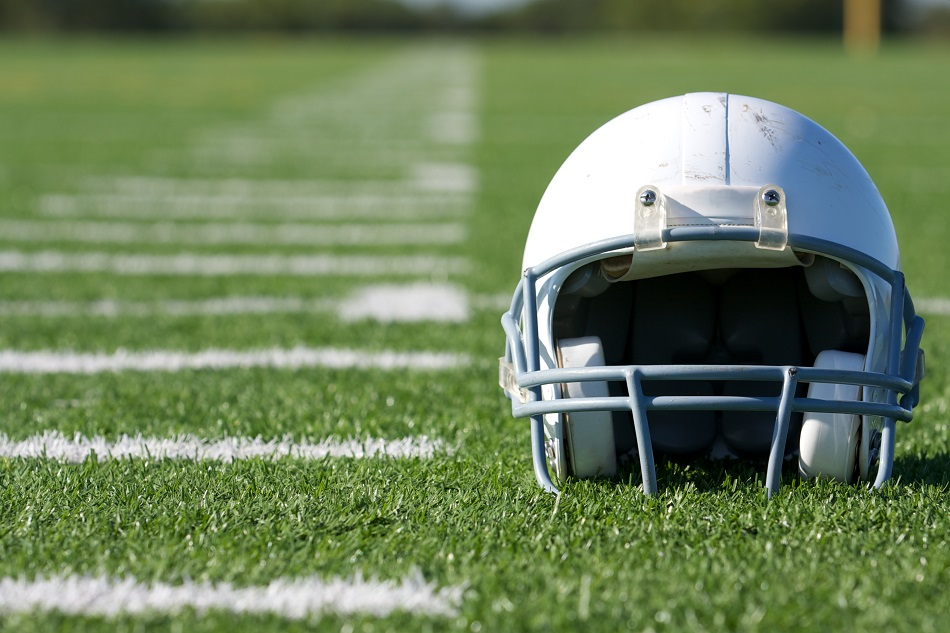Apr 24 2013

Image Credit: David Lee/Shutterstock.com
A concussion is a kind of traumatic brain injury caused by a jolt, bump or blow to the head, thereby altering the functions of the brain. It also results from a blow to the body that causes rapid back and forth head movement. It can occur during recreational or sports activities. Therefore, all athletes, coaches, and parents must learn about the signs and symptoms of concussion.
Identification of concussion can be accomplished with the help of a head impact telemetry system (HIT), a sensor placed into the helmets of players for measuring the severity and number of hits they undergo.
A computer translates the information from the system and alerts the medical staff for concussion signs. In 2010, Purdue University researchers discovered undiagnosed changes in the brain functions of some high school football players using helmet sensor technology.
The U.S. Army has been using this technology for years to learn more about concussion and other, more severe brain injuries.
The device known as HEADS contains a sensor and data recorder, both secured into the helmet of a soldier. The device gets activated upon detecting a blow to the head.
MEMS Inertial Sensor Enabled Head Impact Telemetry System
MEMS Inertial Sensor for the HEAD Impact Telemetry System.
It then measures and records the impact information. This data can later be downloaded via a USB port to enable medical experts to understand the moment of impact. Early detection and treatment of concussion can reduce long-term symptoms and effects of traumatic brain injury.
Research
In 2003, Guskiewicz KM et al studied the incidence of concussion and recovery time after the occurrence of concussion in collegiate football players.
About 2905 football players were tested at the preseason baseline in 1999, 2000 and 2001 to ascertain concussion occurrence. They monitored the players injured from the point of concussion until their full recovery. The players were followed up for repeat concussions until the end of the 2001 football season, or the completion of their collegiate football career. The results showed that of the 184 players that had a concussion, 12 of them had a repeat concussion within the same season. Also, the players having a history of three or more previous concussions were three times more likely to have an incident concussion when compared to players having no concussion history.
The development of intervention strategies for preventing traumatic brain injuries resulting from sports collisions, motorcycle crashes, and automotive collisions requires thorough knowledge surrounding injury mechanisms, tolerance level and response.
In 2004, Zhang L et al. from Wayne State University attempted to delineate actual injury causation and form a reasonable injury criterion with the help of field accident data.
They duplicated 24 head-to-head field collisions by professional football players using a human head model. Depending on the brain tissue responses, the injury levels and injury predictors were analyzed and correlated with the occurrence of mild traumatic brain injury.
The results showed that an injury predictor for concussion could be the shear stress present around the brainstem region.
In 2007, Vaino DC et al from ProBiomechanics LLC, Bloomfield Hills, Michigan studied the impacts causing a concussion in professional football players to determine collision mechanics. This team of researchers reconstructed 25 helmet impacts using Hybrid III dummies.
Six-axis upper neck responses and translational and rotational accelerations were measured in all players. They also developed a model to study the neck strength and other parameters on head responses.
The results showed that the peak accelerations of impact response of the player's head were 94 ± 28 g and 6432 ± 1813 r/s, the velocity changes were measured to be 7.2 ± 1.8 m/s and 34.8 ± 15.2 r/s. Although research is in progress to minimize impact acceleration through helmet padding, further research is required to gain knowledge about head kinematics after impact.
Current Applications
Some of the recent applications of helmet sensors include the following:
- Athletic equipment
- Construction
- Mining
Conclusion
Athletes have a new way to protect themselves from serious brain injuries. While its development is still in the early stages, a new form of a helmet with tiny sensors provides athletes with insight into the extent of their brain injuries and the following recovery process.
These small sensors would alert the players and coaches of head injuries by detecting changes in the brain activity of athletes as they occur.
Brain Sentry's innovative helmet-mounted sensor is one such technology that sends alerts when the athlete suffers a potentially dangerous impact. The sensor light enters a sleep mode automatically when the helmet is not in use. The sensor indicates head impacts by flashing a red light so that the player can be examined using the team’s protocol for concussion assessment. The sensor can be reset to turn off the blinking red light if the player is not injured.
Sensing such brain impacts hint that the applications of the revolutionary little sensors currently being tested for athletic use could be expanded and widely accessible soon.
Sources and Further Reading
- Concussion in Sports - Centers for Disease Control and Prevention
- Helmet sensors help Army study brain injury – Orange country Register
- The NFL's CTE Clock Is Beginning to Tick in Real Time - Huffington Post Blog
- Guskiewicz KM et al, Cumulative Effects Associated With Recurrent Concussion in Collegiate Football Players, The Journal of American Medical Association, 2003, 290(19):2549-2555
- Ropper AH et al, Concussion, The New England Journal of Medicine, 2007, 356:166-172
- Viano DC et al, Concussion in professional football: biomechanics of the struck player--part 14, Neurosurgery, 2007, 61 (2), 313-327
- Zhang L et al, A proposed injury threshold for mild traumatic brain injury, Journal of Biomechanical Engineering, 2004, 126(2):226-36
This article was updated on 13th February, 2020.